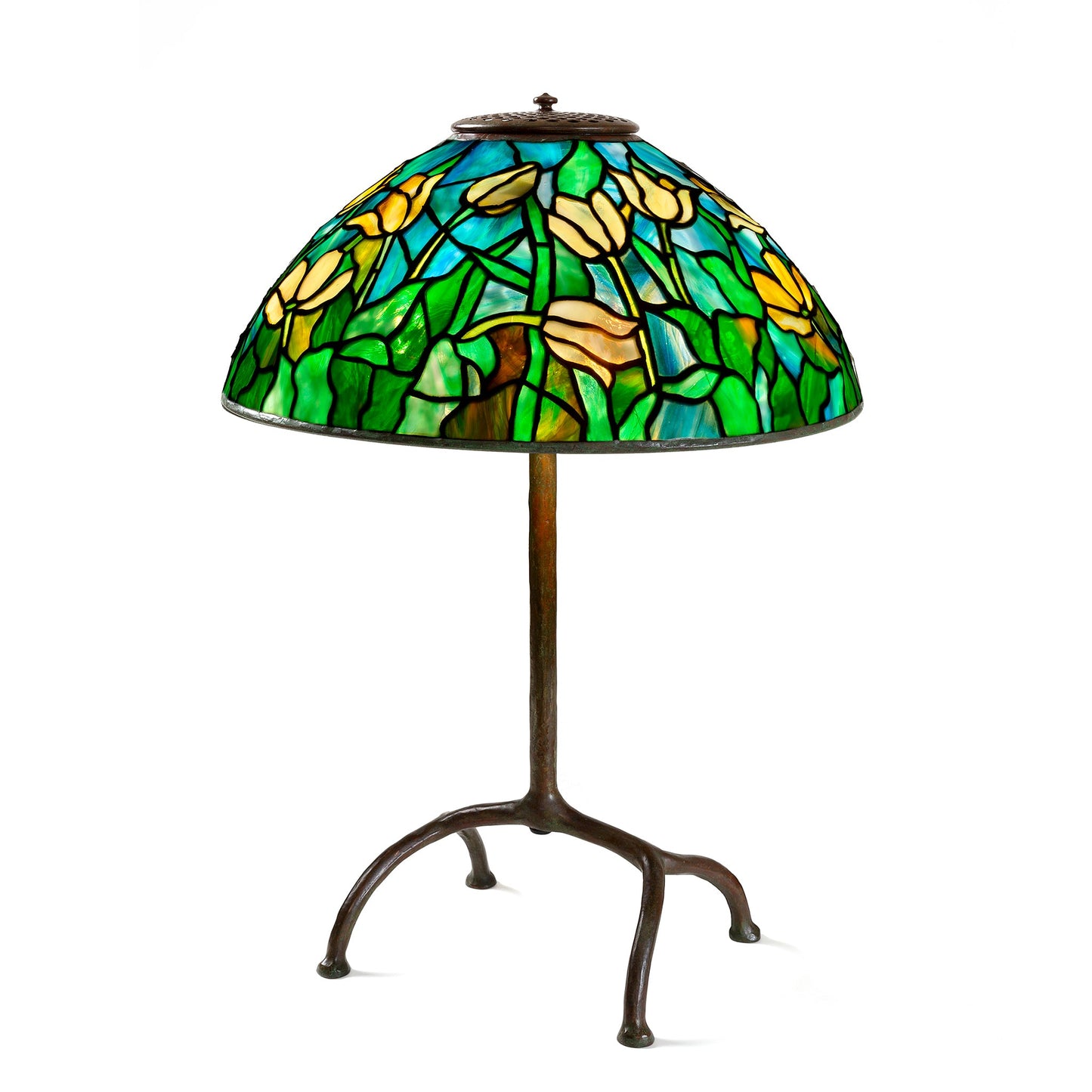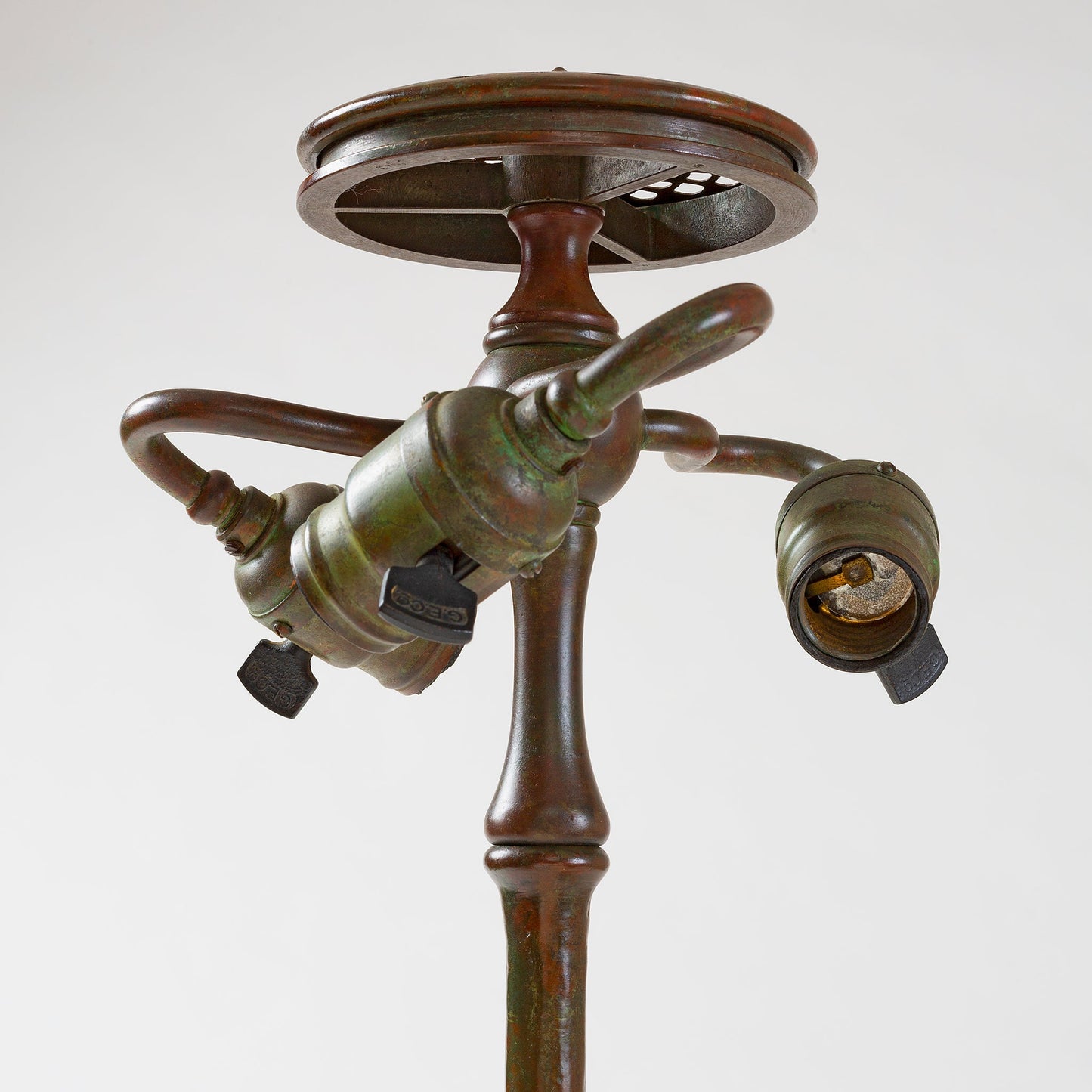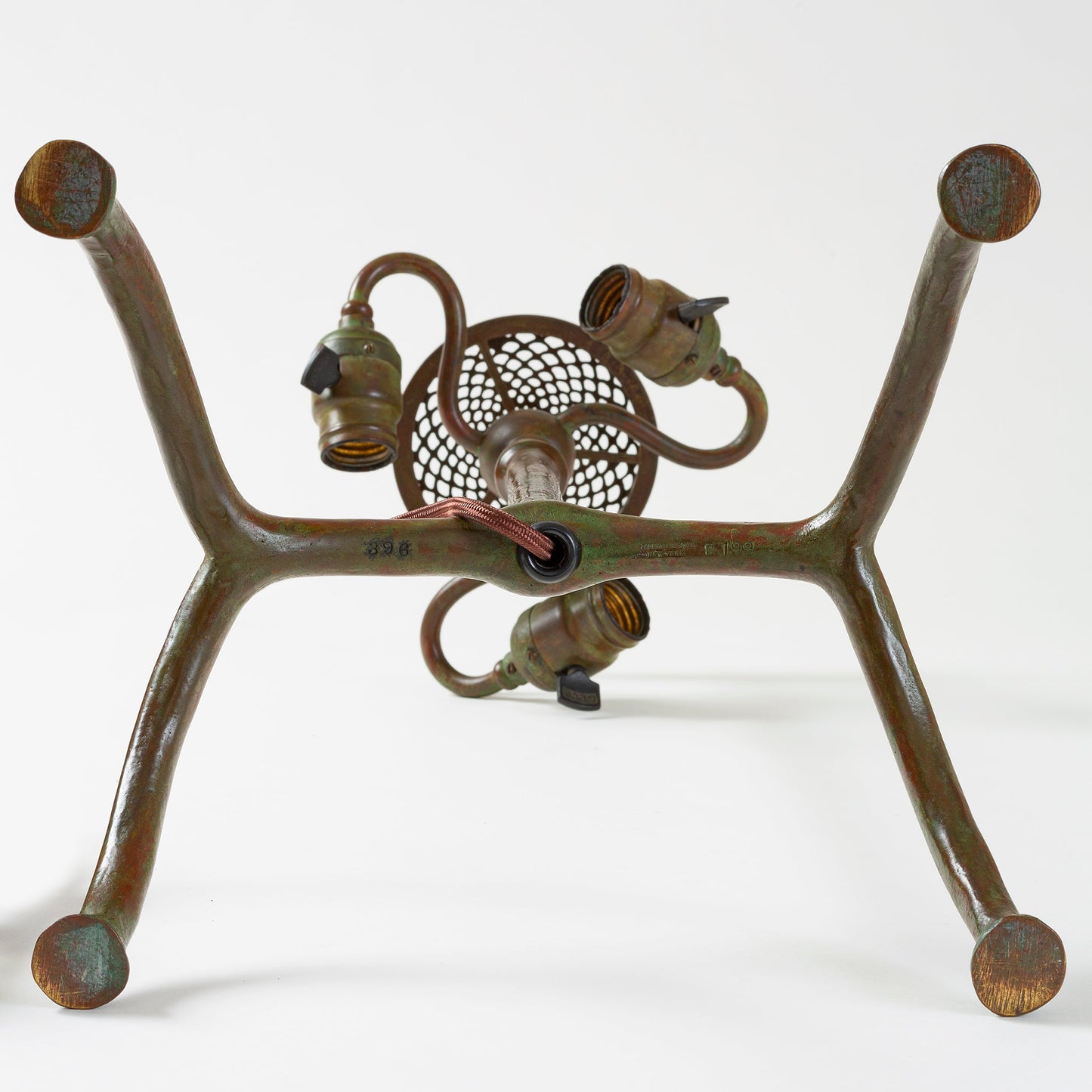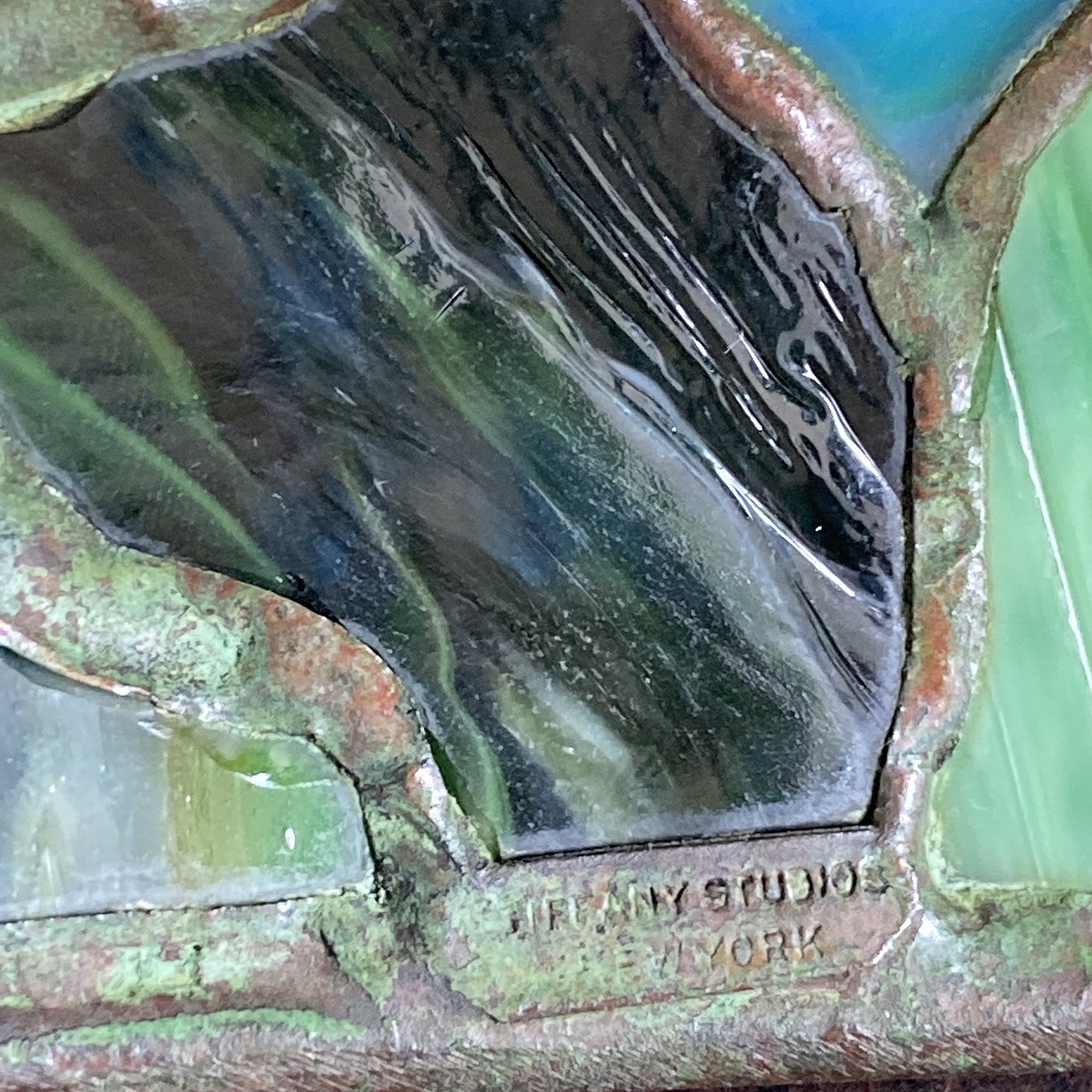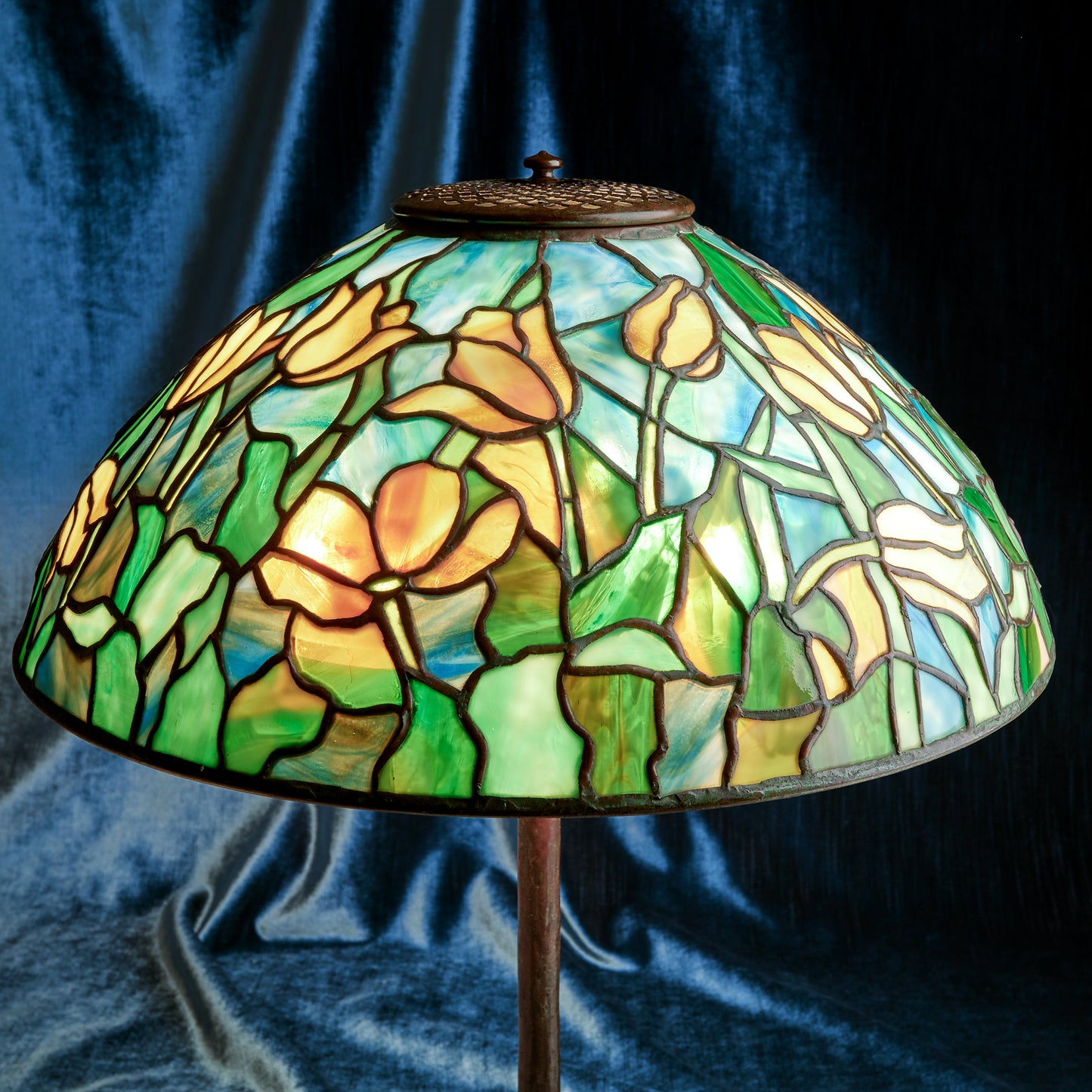Tiffany Studios New York "Windswept Tulip" Table Lamp
This Tiffany Studios lamp with a polychrome “Irregular Tulip ” shade dates from the early 20th century. Composed of a colorful variety of streaked and mottled tiles, a bed of three clusters of vibrant to pale orange tulips, stirred in the wind, surrounds the shade, providing a “field mouse view” of blossoms, stalks and leaves in various stages of maturity against an open blue sky streaked with high clouds. The subtly patinated bronze “root” base, while formed by machine, was hand-finished to create a “hewn” appearance, while the early bronze cap is pierced with a fractal motif. Lamps with tulips as their subject, rendered in dynamic naturalistic settings, formed an important and popular part of Tiffany Studios earliest shade series.
Item #: L-20234
Artist: Tiffany Studios New York
Country: United States
Circa: 1900-1910
Size: 16" diameter, 24" height
Materials: Leaded Glass, Bronze
Shade signed: ''Tiffany Studios New York ‘'
Base signed: ''Tiffany Studios New York S199 396''
Literature: The “Irregular Tulip” shade, in variant colors, is pictured in: The Lamps of Louis Comfort Tiffany, by Martin Eidelberg, Alice Cooney Frelinghuysen and Nancy McClelland, ppp.143-145, figures 35 and 36.
Item #: L-20234
Artist: Tiffany Studios New York
Country: United States
Circa: 1900-1910
Size: 16" diameter, 24" height
Materials: Leaded Glass, Bronze
Shade signed: ''Tiffany Studios New York ‘'
Base signed: ''Tiffany Studios New York S199 396''
Literature: The “Irregular Tulip” shade, in variant colors, is pictured in: The Lamps of Louis Comfort Tiffany, by Martin Eidelberg, Alice Cooney Frelinghuysen and Nancy McClelland, ppp.143-145, figures 35 and 36.














